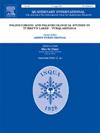Reconsidering chronologies and cultural change on the south coast of Peru: A compilation and analysis of radiocarbon dates from Nasca, Ica, and Paracas
Abstract
The South Coast of Peru, the location where Peru's widely used period/horizon relative ceramic chronology was established and where archaeological samples were obtained for the earliest radiocarbon studies, has figured prominently in the development of chronologies in the Central Andes. We examine the current state of chronology in the region with a compilation of 770 published and unpublished radiocarbon dates from >60 sites in the Nasca and Ica drainages and on the Paracas Peninsula, spanning a period of approximately 8000 years, to evaluate the relative ceramic chronologies and explore the timing and duration of major cultural changes. Kernel Density Estimate (KDE) summaries of Bayesian phase models demonstrate the following aspects of regional cultural dynamics: the earliest settlements began in the Preceramic ca. 6000 BCE and are found on the coast; the Paracas culture was established ca. 900 BCE and cultural development was first focused in the north and then spread south; a reverse direction of cultural influence is found during the Nasca culture when innovation began in the south and spread north; an early mixture of Late Nasca/local Loro culture is found in Nasca (510–720 CE) followed by the spread of Loro elsewhere and the establishment of intrusive highland Wari colonies that peaked in the mid-9th century CE; and the Late Intermediate Period was variable throughout the region in terms of timing and duration, reflecting a turbulent period. The results of the study reveal strong temporal overlap in the ceramic styles indicating they are not purely sequential and consequently are inadequate as chronological markers on a regional level. The research highlights the potential of radiocarbon evidence to reveal sub-regional temporal heterogeneity and to help us better understand the dynamics of cultural change.

 求助内容:
求助内容: 应助结果提醒方式:
应助结果提醒方式:


